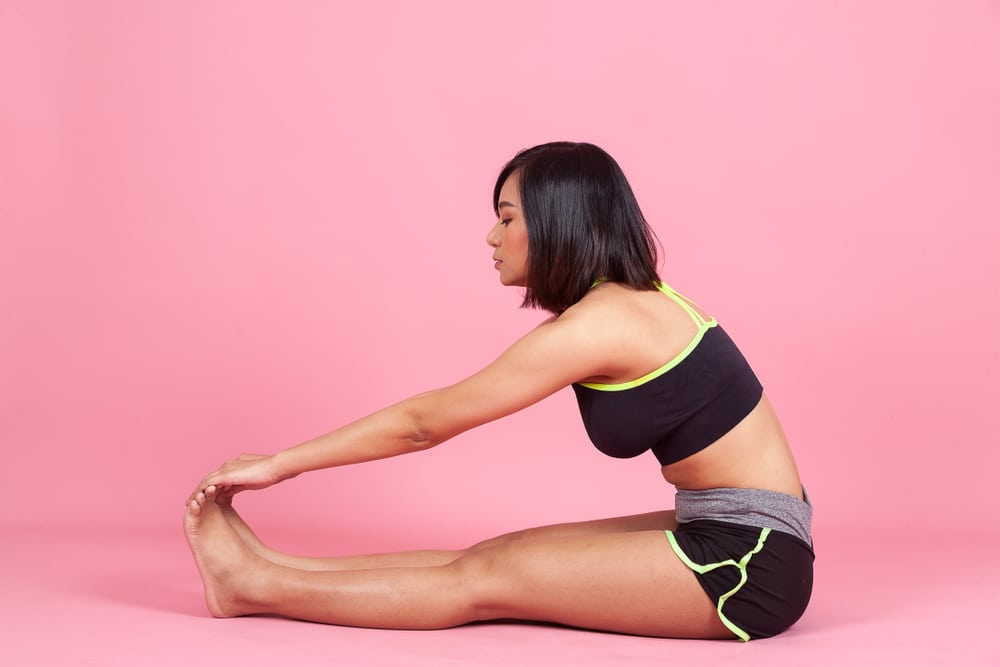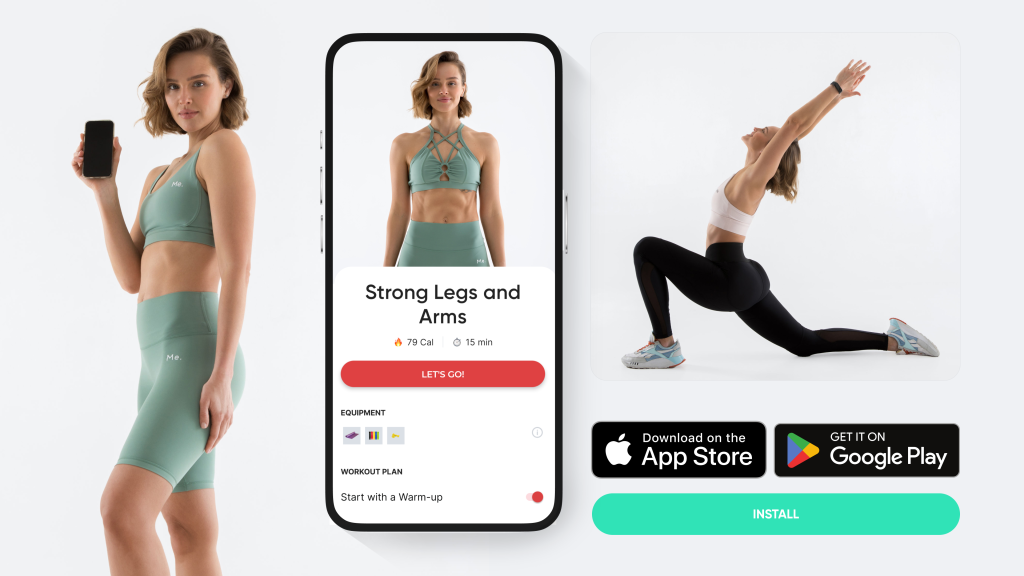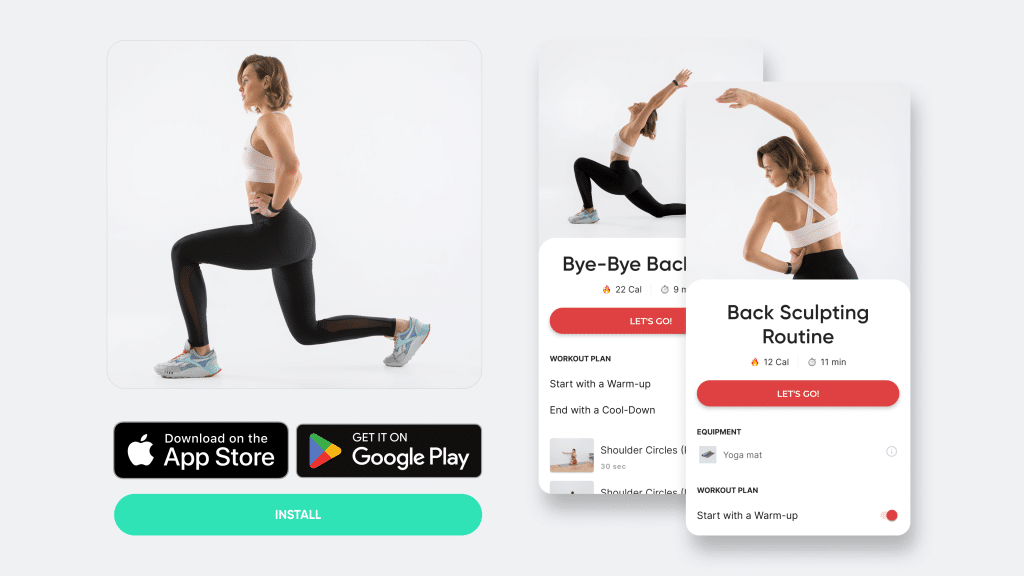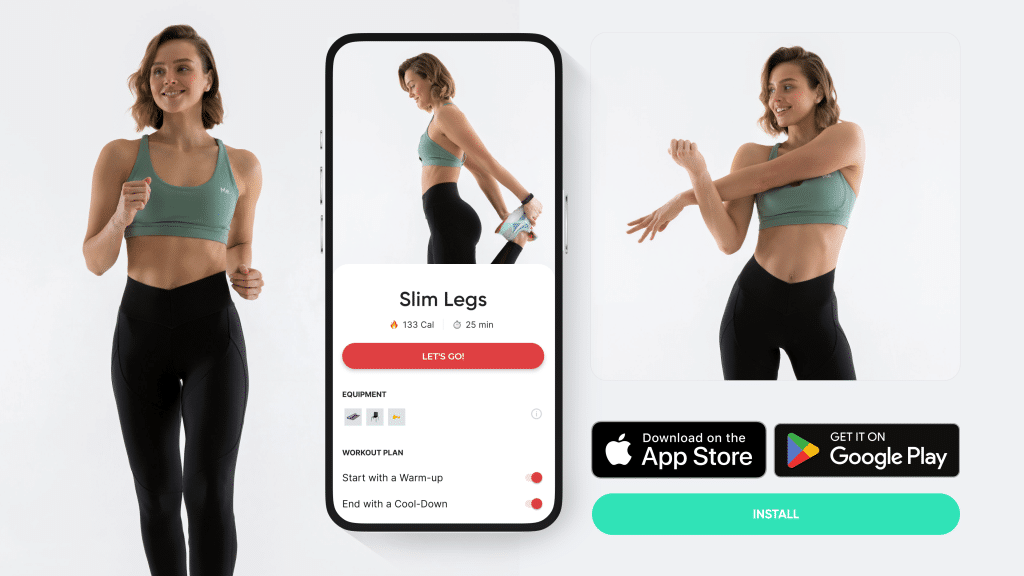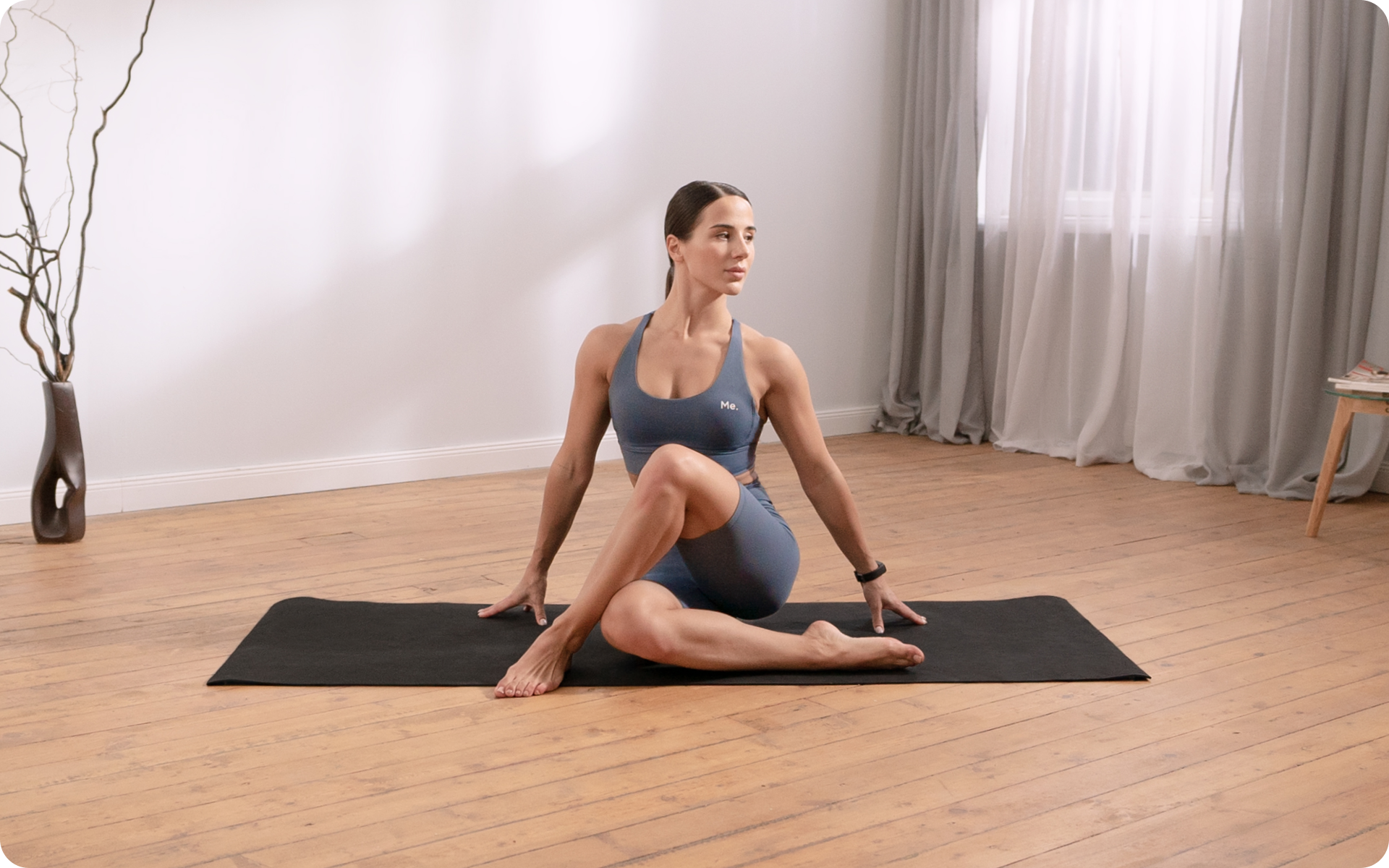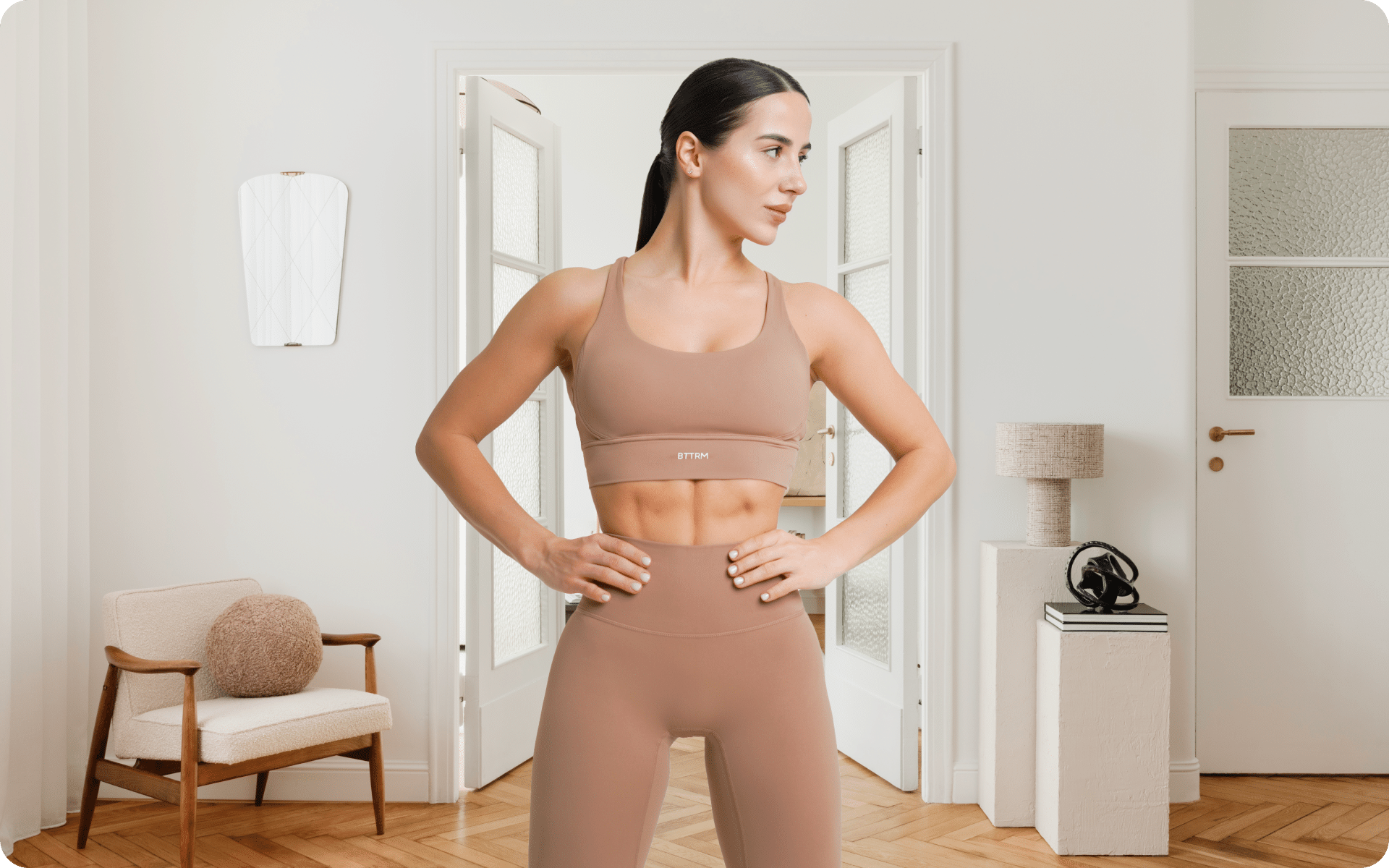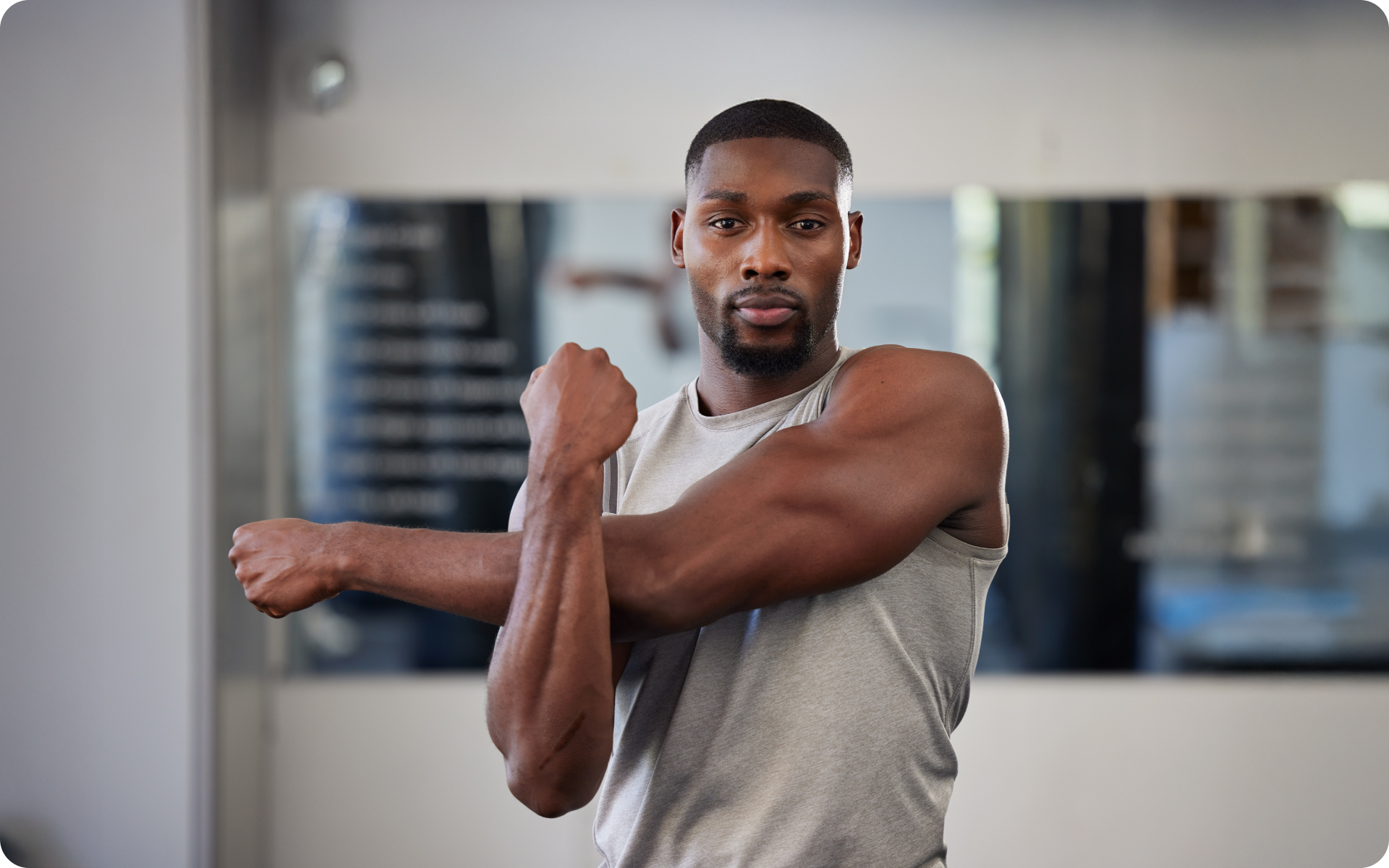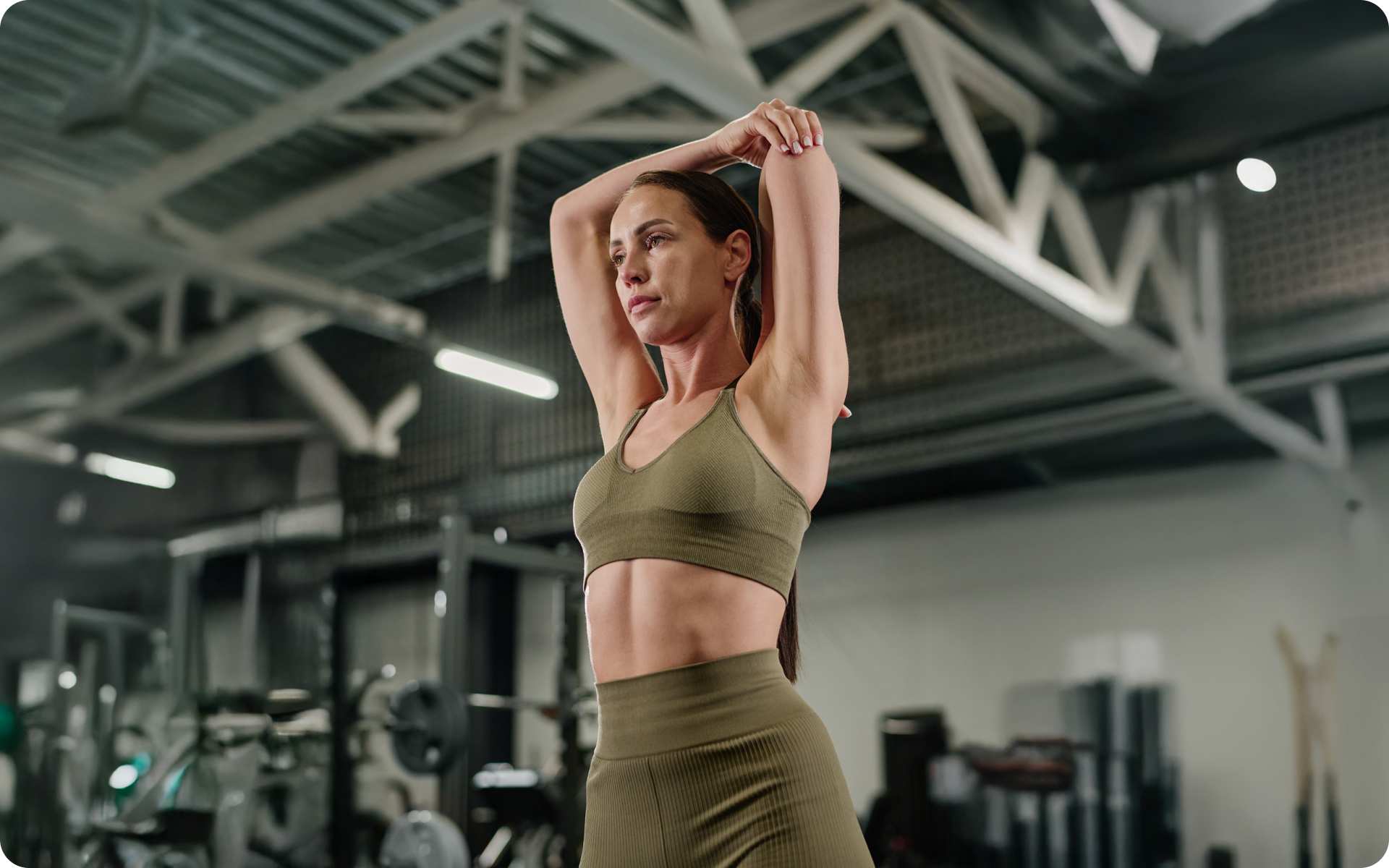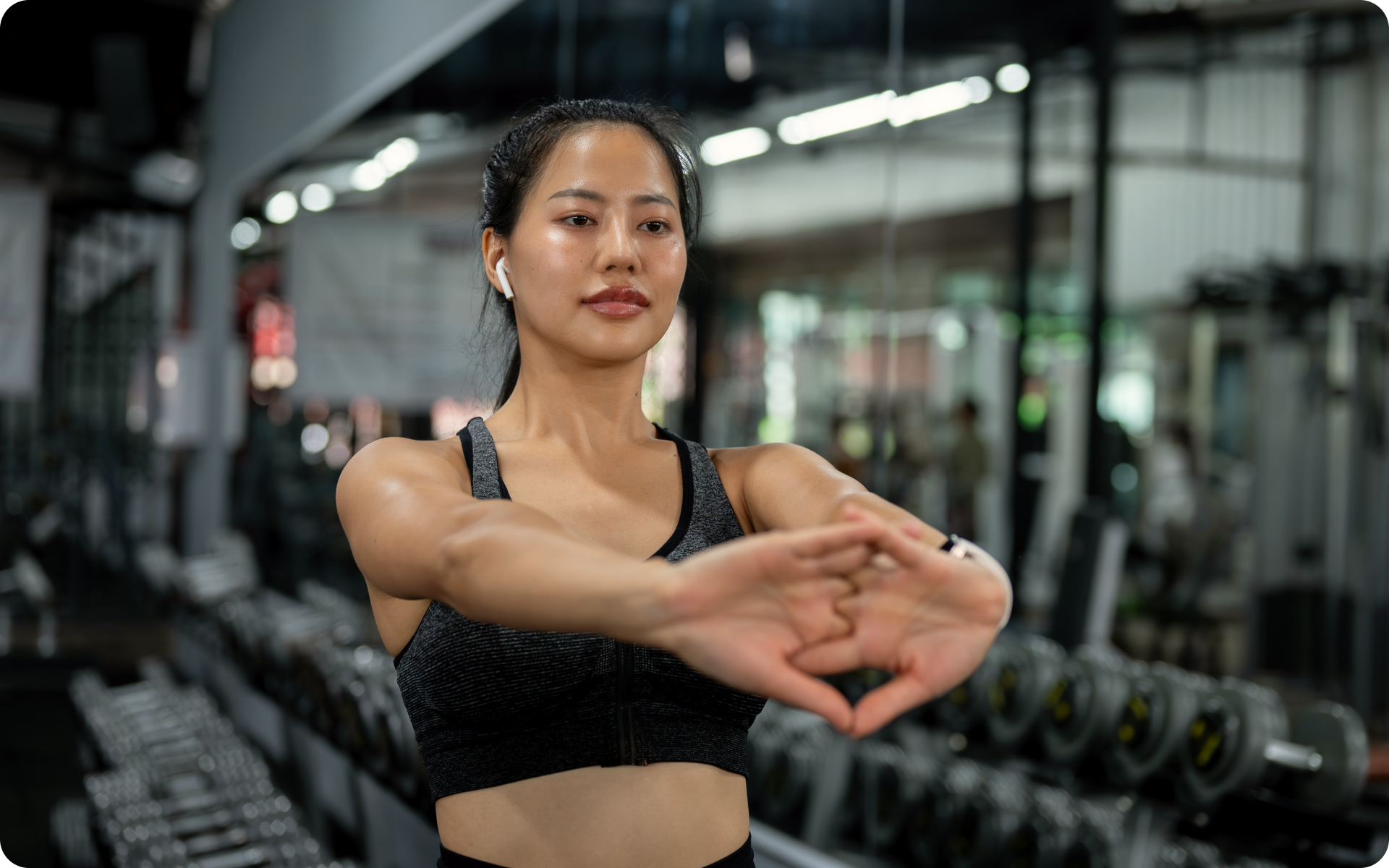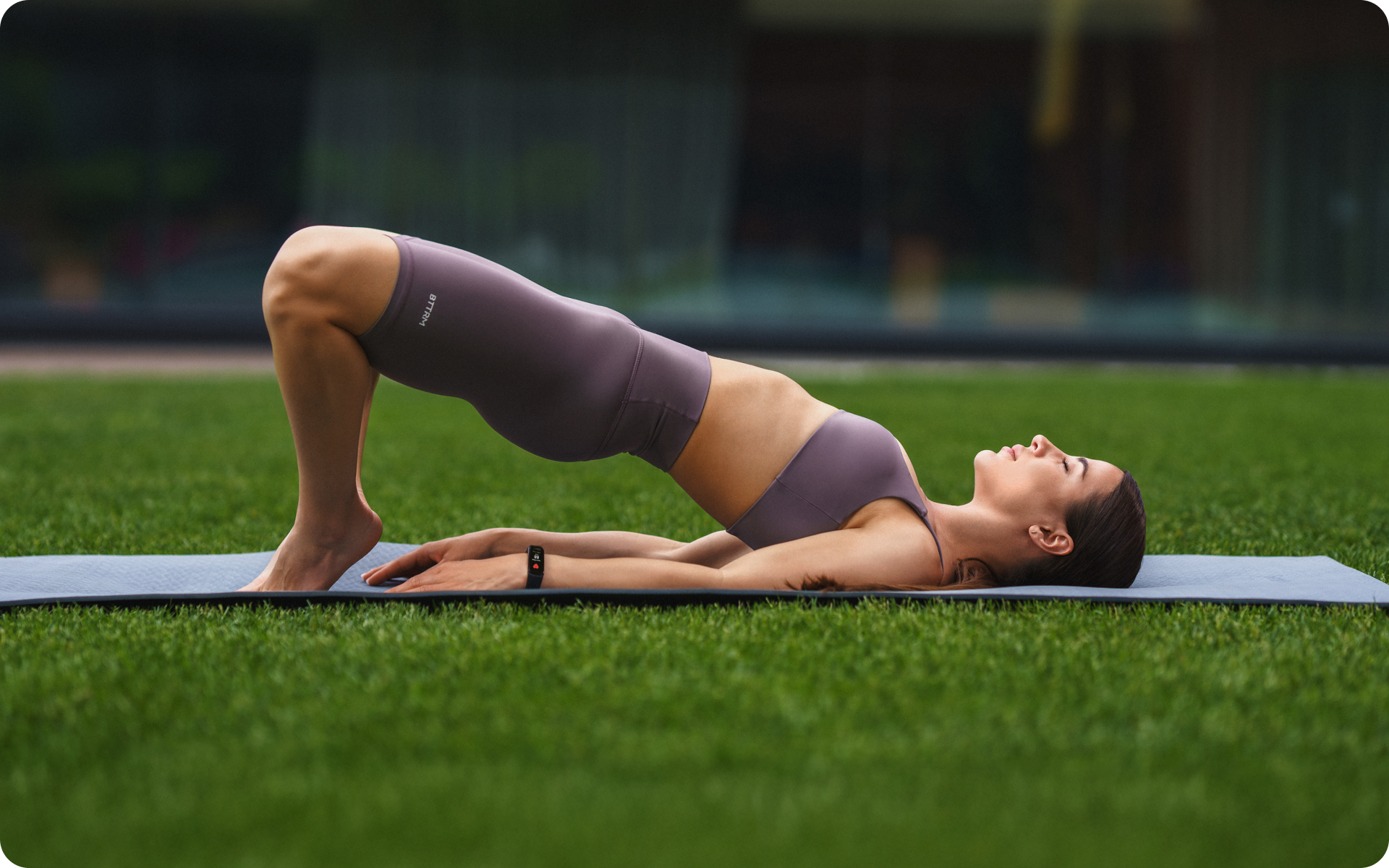It is common knowledge that training and exercising help keep your body fit while preparing it for peak performance. The question then becomes: Should you stretch before you start training or taking part in any sporting activity? The two most common variants of stretching – dynamic and static – have been around for a while.
Dynamic stretching increases systemic blood flow, which warms up your muscles, improves joint mobility, and increases tendon and ligament compliance. This makes your body more prepared for physically engaging activities. But what makes dynamic stretches so popular among athletes and people who work out? Let’s find out, shall we?
What Is Dynamic Stretching?
Exercising is one of the best things you can ever do for your body. It doesn’t just help you stay fit, it also reduces the risk of contracting certain diseases. However, before you start, your muscles and joints need to be in the correct form. You don’t want any mobility issues to arise during your workout due to tight muscles.
This is where stretching comes in. Stretching is naturally intuitive. For example, when you yawn and stretch, you feel good, right? Stretching has a way of making your body feel invigorated. It has been increasingly incorporated in exercises over time and its form has evolved for maximum benefit.
Dynamic stretches are one such evolution. Dynamic stretching is often performed through a functional range of motion depending on the person’s typical goal that may or may not incorporate a particular muscle or joint’s full range of motion. They are generally done as part of warm-up routines before athletic events or workout sessions. In the majority of cases, dynamic stretching imitates the physical activities you’re about to engage in.
Dynamic stretching exercises are known to increase your power, sprint, agility, jump, and overall performance. This is attributed to the fact that these exercises excite your muscles faster and earlier. As a result, your coordination is significantly improved (1).
Are there any significant benefits that arise from warming up using dynamic stretches?
Read More: Beginner Stretches To Level Up Your Stretching Game
What Are The Benefits Of Dynamic Stretching?
Dynamic stretches have several wonderful effects on the body. Here are some reasons why you may want to get started!
Warm Up Your Muscles
This is probably the most lauded benefit of these warm-up routines. They get your muscles up to their optimal “working temperatures”, which increases tissue compliance and response, maximizing their overall function and performance.
May Reduce The Risk Of Injury
Going straight into your workout without warming up seems like a great idea, right? Well, at least it might until you injure a muscle or joint. But this can be avoided by warming up using dynamic stretches.
There are no conclusive studies that support their effectiveness in reducing injuries, but dynamic stretches can help you get into form. This ultimately lowers the risk of muscle injury due to factors such as muscle stiffness (2).
Get Your Blood Pumping
Your cardiovascular system also needs to be prepared before you start a workout session. Your heart can quickly ramp up the number of beats per minute over long periods.
Dynamic stretching will increase your circulation, making the delivery of oxygen and nutrients throughout your body faster (4). As a result, your body will likely feel more energized and tire more slowly during the workout.
Can Shorten Your Recovery Time
When you warm up using dynamic stretches, there is a high chance that your recovery time and post-exercise soreness will be reduced. This is because warmed-up muscles are limber and move more easily (1). This cuts down on stiffness during and after a workout. Increased blood circulation before starting exercise leads to improved muscular waste removal, which often results in reduced post-exercise soreness.
In addition, better circulation and increased oxygen and nutrient supply help your sore muscles repair. This makes you want to give it a shot, right?
Improve Your Mobility
This type of warm-up is an excellent way of improving your mobility in both the short and long term. With every rep and movement, your muscles and joints become more mobile. You can then enjoy the added benefits that arise from the increased range of movement.
An increased range of motion for muscles and joints means a greater range of movement can occur before a muscle, ligament, tendon, or joint is overstressed. In addition, the resulting increase in mobility from your dynamic warm-up will lead to improved performance during exercise. A recent study suggested that dynamic stretching increases your muscle strength while also improving your range of motion (2).
Whether you’re a workout beast or just a beginner making your first foray into the world of fitness and dieting – BetterMe has a lot to offer to both newbies and experts! Install the app and experience the versatility first-hand!
Prepare You Mentally
Preparing for any workout or sporting event is not just a physical process, it’s also mental. If you get your body in shape but your mind isn’t in the game, the results won’t be as impressive. This will happen regardless of how you feel physically.
So how will dynamic stretches improve your mental state before an exercise? Firstly, it gives you transition time, which enables you to shake off anything you’ve been stewing over mentally. This will then help you focus on the activity you’re about to undertake.
Next, you get to reconnect with your body and think about your workout goals for the session. Finally, these exercises often mimic the activity you’re about to perform. This will put you in a more mentally prepared state before you start to exercise.
A huge benefit of dynamic warm-ups vs static stretching is the increased neuromuscular performance that results, which is also known as the “brain to muscle” connection. This is how the nervous system responds to the demands of exercise to allow your muscles to perform at their highest level.
Dynamic Stretches Improve Your Performance
Dynamic stretching is likely to improve your performance based on the culmination of factors that are outlined above. When your muscles are warm, neuromuscular connections are in sync, your heart is working to its optimal capacity, and you’re in the right headspace, so your performance is bound to improve.
Maybe you’re in a workout slump and are wondering what’s wrong? Adding some dynamic stretches to your warm-up may be the magic touch you need to make sure things get going again. With all this hype about dynamic stretches, you may be wondering about static stretches.
When comparing dynamic vs static stretching, how do they perform against each other? Keep reading to find out.
What Is The Difference Between Static And Dynamic Stretching?
What is the difference between the two and which is better for your workout routine? With the increasing popularity of dynamic stretches, static stretches and their relevance have come under scrutiny. Are static stretches still relevant?
While dynamic stretches are based on movement, static stretches are all about taking a muscle to its safe limits of motion and holding that position for a certain period of time. You don’t warm up your muscles when static stretching, you relax them. They’re better suited as part of your post-workout cool-down process.
So, what is the focus of dynamic stretching? Simply put, dynamic stretches get your body moving. You don’t hold the stretches for any length of time and they are ideal for pre-workout warm-up exercises.
What are some dynamic stretching examples for pre-workout warm-ups?
Read More: Leg Stretches To Leave Muscle Pains, Cramping, And Discomfort In The Past
Dynamic Stretching Examples For Pre-Workout
Several dynamic stretches can get your body warmed up before you work out. Here are some top picks to get you started:
Dynamic Stretches For Your Legs
Dynamic leg stretching is one of the most popular variants. Both athletes and non-athletes use it before any physical activity. Here are some examples:
Dynamic Hip Circles
- Start by standing on one leg. You can use a worktop or wall for support.
- Gently swing the other leg in small circles. The movements should be toward the side.
- Switch legs after every 20 reps.
Pro tip: The more flexible you become, the wider your circle can be. This will work your muscles more.
Dynamic Hip and Thigh Stretch – Walking Lunges
- Stand up straight and get into a lunge position.
- Slowly descend into the lunge, remembering to keep your back straight. If you’re having trouble balancing, use your arms to improve stability.
- Make sure you feel the stretch along the front of your leg that’s bent toward the floor.
- Keep the position for a few seconds and repeat on the other leg.
Pro tip: You may be able to get closer to the floor as your flexibility increases. This will allow for more movement in your hip and thigh area.
Dynamic TFL Stretch
- Start by crossing one leg in front of the other.
- Bend down to touch your toes.
- Stretch the outside of your thigh on the opposite leg while you move your hands across the floor toward the front leg.
- Repeat this movement on both sides for the required number of reps.
Pro tip: If you feel some tightness in your lower back, you should try this exercise.
Dynamic Stretches For Your Upper Body
These include:
Dynamic Arm Circles
- Place your feet shoulder-width apart while holding your arms out to the side at shoulder height.
- Circle your arms slowly, starting with small circles and working your way up to large circles.
- Reverse the direction and perform 20 more reps.
Pro tip: This is an ideal exercise before boxing or swimming.
Dynamic Upper Back Stretch
- Place your feet shoulder-width apart and stand upright.
- Slightly bend your knees.
- While interlocking your fingers, push your hands as far away from your chest as possible.
- Doing this should allow your upper back to relax and you should feel some stretch between your shoulder blades.
Pro tip: As it loosens your shoulders, this is a particularly great exercise before swimming.
Dynamic Arm Swings
- Face forward while extending your arms out in front of you at shoulder height. Your palms should be facing down.
- Swing both of your arms to the right while you walk forward. Your left arm should reach in front of your chest and your right arm toward the side.
- As you swing your arms, keep your torso straight. You should only turn your shoulder joints.
- Reverse the swing direction while walking. Perform 5 reps on each side.
Pro tip: This move will help your torso and arms loosen up. You can increase the number of reps as you feel your muscles improve.
Dynamic Spinal Rotations
- Place your feet shoulder-width apart while you bring your arms out to the side at shoulder height.
- Slowly rotate your body back and forth from right to left.
- Repeat 5-10 times.
Pro tip: This warm-up will improve and loosen the movement in your mid and lower back before any exercise.
Conclusion
Dynamic stretches are an excellent way of improving your physical performance during exercise or sports. They prepare your body and provide you with energy that will help you power through your workout sessions. So don’t just jump into that exercise, and warm up using these stretches to experience their results first hand.
DISCLAIMER:
This article is intended for general informational purposes only and does not serve to address individual circumstances. It is not a substitute for professional advice or help and should not be relied on for making any kind of decision-making. Any action taken as a direct or indirect result of the information in this article is entirely at your own risk and is your sole responsibility.
BetterMe, its content staff, and its medical advisors accept no responsibility for inaccuracies, errors, misstatements, inconsistencies, or omissions and specifically disclaim any liability, loss or risk, personal, professional or otherwise, which may be incurred as a consequence, directly or indirectly, of the use and/or application of any content.
You should always seek the advice of your physician or other qualified health provider with any questions you may have regarding a medical condition or your specific situation. Never disregard professional medical advice or delay seeking it because of BetterMe content. If you suspect or think you may have a medical emergency, call your doctor.
SOURCES:
- Acute Effects of Dynamic Stretching on Muscle Flexibility and Performance: An Analysis of the Current Literature (2018, pubmed.gov)
- CURRENT CONCEPTS IN MUSCLE STRETCHING FOR EXERCISE AND REHABILITATION (2012, nih.gov)
- Stretching exercises enhance vascular endothelial function and improve peripheral circulation in patients with acute myocardial infarction (2013, pubmed.gov)

